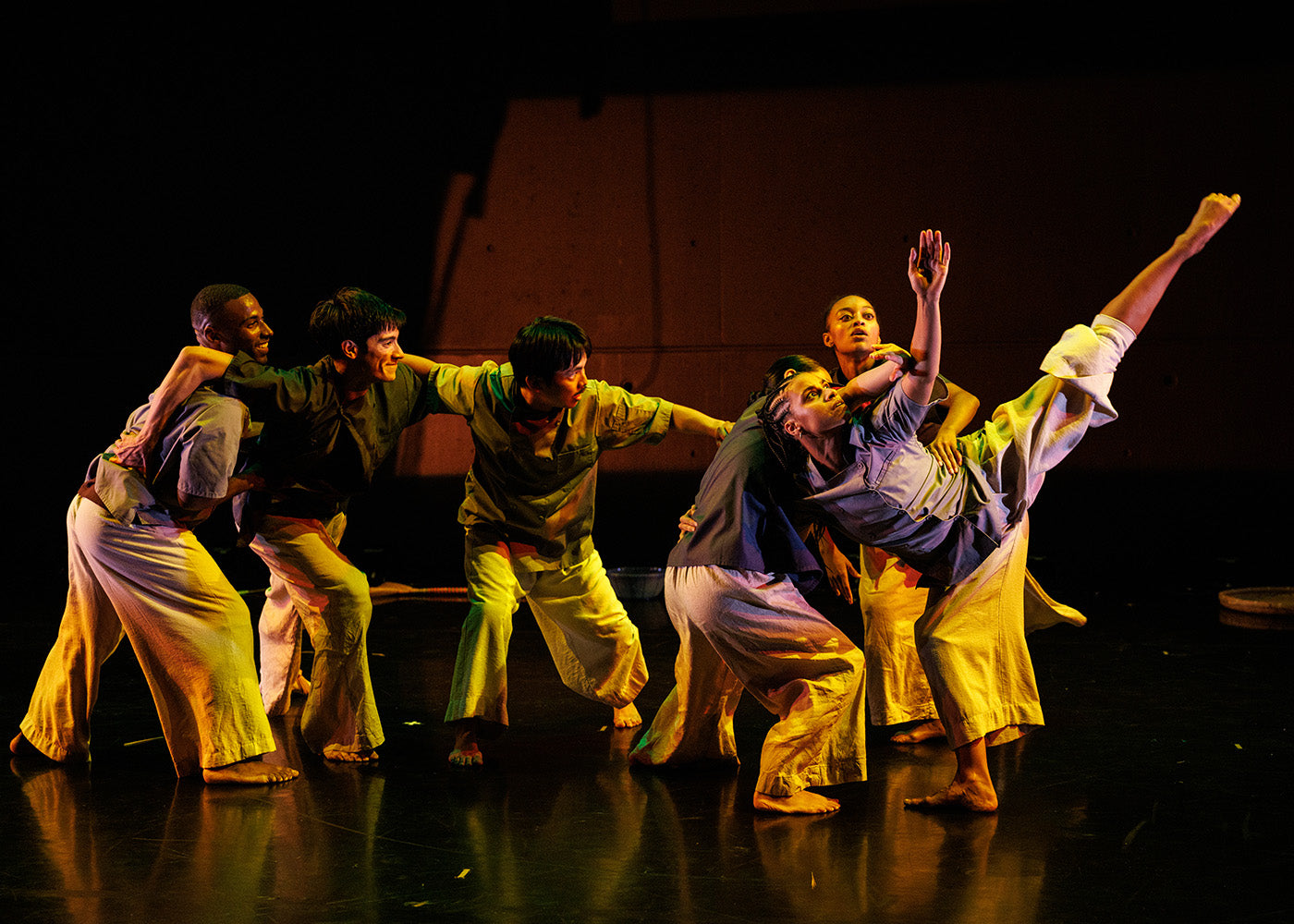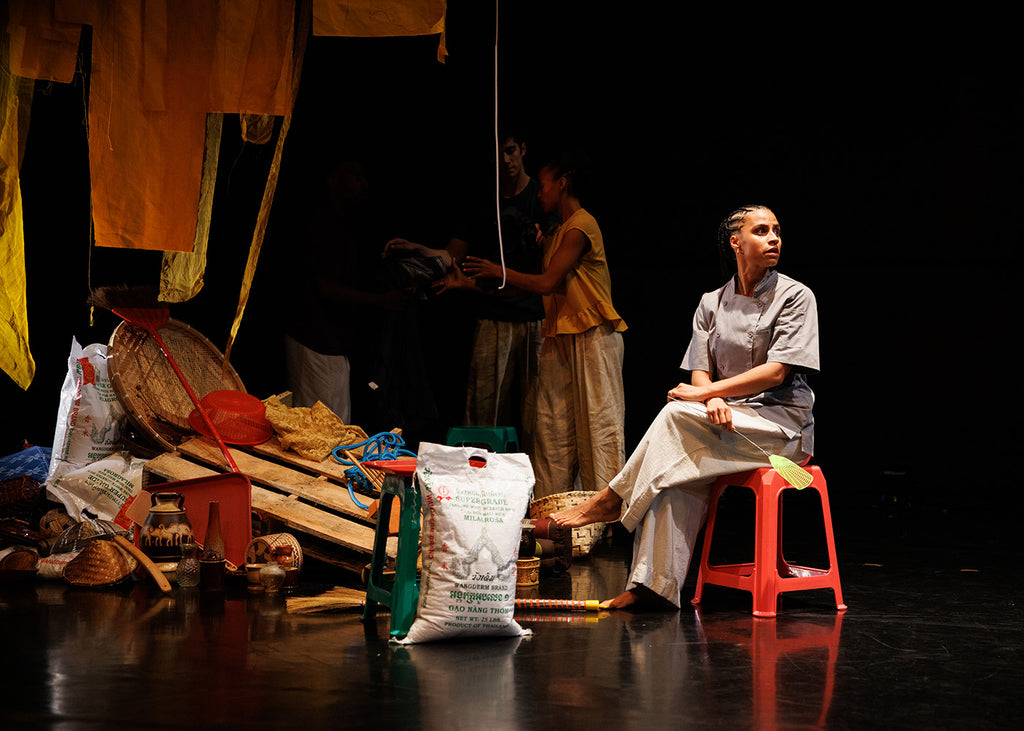More dancers entered to form a cast of six, bringing the restaurant energy to life as urban traffic and opening-hour noises, part of the original score by Bryndon Cook and Quaba Venza Ernest, backgrounded the action. The integrated restaurant sounds along with musical compositions by a couple Thai artists, and a jazz standard by Antonio Carlos Jobim interwove intelligently to evoke the pulse and creativity within a kitchen, nostalgia for homeland, and dreams of a better future.
The dance’s sections were listed on the program like menu items and included entries such as: Prep, Rice, Service, Radio Poll, Daydream, Flo, and Chaos. Several scenes were sprinkled with moments of inventive humor. For example, “Rice” featured two male dancers in humorous rough and tumble interactions as they competed to show off their strength in lifting and hauling an industrial sized bag of rice. “Service” offered a view of the collective coordinated effort of serving the public a tasty, culinary product. All the dancers performed certain gestures at specific places on the stage mimicking the organized flow of work at various stations in a professional kitchen. When the pace intensified, a scene of chaos ensued with people pushing each other out of the way, stepping over fallen stools, and colliding into one another. Amid the frenzy, Jennifer Florentino leaped up and was caught in the air in a seated lift. From her high perch, she gestured commands to the others acting as the family matriarch (evidently based on Jinakunwiphat’s grandmother, who owned the family restaurant). In another stroke of humor, she wielded a fly swatter batting everyone out of her way so she could complete her task.
The dramatic action was generally held within a container of luscious, full-bodied dancing in a balletic-modern style with various groupings of dancers inter-relating in pleasing floor patterns. Breakout moments of pedestrian stage business between sections of dancing worked well integrating real-life activities representative of discipline and ritual. This was demonstrated through the frequent handling of their work attire, the costumes designed by Karen Young. The dancers donned and buttoned their uniform shirts before starting each scene and then took them off afterwards, neatly folding them with care and precision.











comments